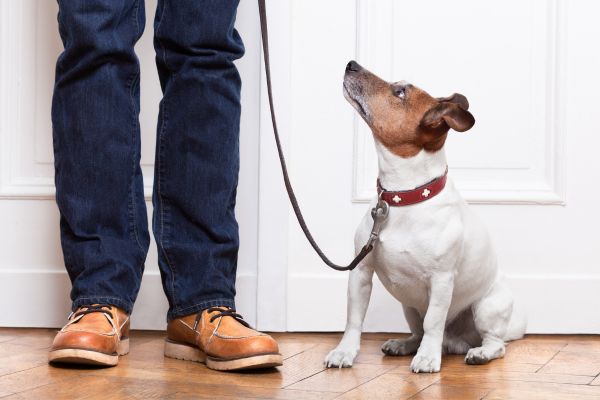If you’ve ever tried to train a pet, you know it’s not always a walk in the park. Sometimes it’s a sprint, a tug-of-war, and a test of patience all rolled into one. Whether you’re teaching your new puppy to sit, helping your cat stop scratching the furniture, or even working with a parrot that loves to scream for attention, having the right training tools for pet owners can make all the difference. Let’s dive into what really works, what’s worth skipping, and how to make the training journey more fun for both you and your furry (or feathery) friend.
Understanding Why Training Tools Matter
The thing is, training isn’t just about commands and treats—it’s about communication. Animals learn through association, consistency, and timing. That’s where training tools come in. They bridge the gap between what we want our pets to do and how they actually understand our cues. The best training tools for pet owners help you guide behavior without frustration, ensuring your pet feels safe and rewarded during the process.
When you use the right tools, training becomes not just easier but way more enjoyable. You’ll see your pet start to “get it,” and that lightbulb moment is pure magic.
Clickers – Small but Mighty
You might’ve seen those tiny handheld clickers before—simple little gadgets that make a clicking sound when pressed. But don’t underestimate them. Clicker training is one of the most effective methods out there for shaping behavior. Here’s how it works: every time your pet does something right, you click the device and then give a treat. Over time, your pet learns that the click means “you did good,” and they start repeating the behavior.
Clickers are especially great because they mark the exact moment of success. Timing is everything in training, and this tool helps you nail it every time. Plus, it works for dogs, cats, birds, and even rabbits. Seriously, you’d be surprised how many animals respond to it.
Treat Pouches – Keep Rewards Handy
Let’s be real: fumbling for treats while your dog stares up at you expectantly is not a good look. That’s why treat pouches are game-changers. They clip onto your belt or waistband, keeping your hands free but your rewards close by. Since consistency and timing matter so much in training, being able to reward good behavior instantly is key.
And hey, it’s not just about convenience. Having a designated spot for treats helps your pet associate training time with positive vibes. Every time that pouch comes out, they know it’s time to learn—and earn.
Leashes and Harnesses That Work With You
Leashes and harnesses might seem like basic gear, but when chosen carefully, they become essential training tools for pet owners. A sturdy leash with the right length gives you control without pulling or straining. For dogs that tend to tug, a no-pull harness can save your shoulders and make walks more peaceful.
The right harness distributes pressure evenly across the chest, not the neck, preventing discomfort or injury. Remember, training isn’t about forcing obedience—it’s about guiding gently and consistently. The right leash or harness helps you do exactly that.
Interactive Toys for Mental Stimulation
Here’s something many people forget: mental exercise is just as important as physical activity. Interactive toys—like puzzle feeders, treat-dispensing balls, or snuffle mats—keep pets mentally sharp. They encourage problem-solving, patience, and focus, all of which support good behavior overall.
If your pet is the type that gets bored easily (and ends up chewing on your favorite shoes), interactive toys are a must-have. They burn off energy in a productive way, which means fewer behavioral issues in the long run.
Training Pads and Crate Essentials
House training, especially for puppies, can be… let’s say, an adventure. Training pads make the process cleaner and less stressful. They’re absorbent, easy to replace, and help your pet learn where it’s appropriate to “go.” Pair those pads with a comfortable crate, and you’ve got a solid setup for teaching boundaries.
Now, some people think crates are cruel, but when used correctly, they’re actually a safe haven. Pets are den animals by nature, and a cozy crate helps them feel secure. It also aids in establishing routines and structure—key ingredients for successful training.
Gentle Deterrents and Corrective Tools
Sometimes, training means discouraging unwanted behavior—without being harsh or scary. Tools like bitter sprays (to stop chewing), motion-activated air sprayers, or ultrasonic deterrents can be effective when used thoughtfully. The goal here isn’t punishment but redirection. You’re teaching your pet, “Hey, that’s not cool—try this instead.”
That said, stay away from shock collars or anything that causes pain or fear. These outdated methods might stop a behavior temporarily, but they damage trust. Positive reinforcement always wins in the long run.
Training Apps and Smart Tech
Welcome to the modern era of pet training. Believe it or not, there are now apps that help you track your pet’s progress, remind you of training sessions, and even offer virtual coaching. Smart collars can monitor activity levels, detect barking, and provide real-time feedback. While they’re not a replacement for good old-fashioned bonding, they can be amazing training tools for pet owners who like to keep things organized and tech-savvy.
The beauty of these digital tools is that they keep you consistent—and consistency, as you’ve probably guessed, is the secret sauce in training.
Patience, Positivity, and Perspective
At the end of the day, no tool—no matter how fancy—can replace patience and positive energy. Training takes time. Some pets learn commands in a day; others take weeks. The key is to stay consistent and celebrate small wins. That moment when your dog finally sits on command or your cat stops scratching the couch? Totally worth it.
And don’t forget to enjoy the process. Training is more than teaching—it’s connecting. It’s understanding how your pet thinks and building trust that lasts for years. That’s something no gadget can replicate.
Bringing It All Together
So, if you’re starting your training journey or just looking to up your game, remember this: the best training tools for pet owners are the ones that make life easier and learning fun. From clickers and treat pouches to smart collars and puzzle toys, each tool plays a role in creating a better bond with your pet.
But here’s the truth—tools are only half the story. The real magic happens when you mix them with patience, empathy, and love. Your pet isn’t just learning tricks; they’re learning to trust you. And honestly, that’s what being a great pet owner is all about.







